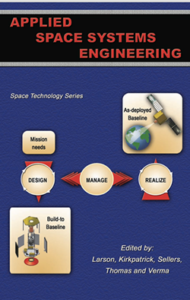Empower Project Success
with TSTI as your systems engineering and project management training, coaching, and consulting partner.
Applied Model-Based Systems Engineering
Course Description
This 2-day course provides a broad overview of the processes, practices, tools and techniques that comprise the emerging discipline of model-based systems engineering (MBSE), with a greater focus on application for the user and practitioner. The course begins with a review of the systems engineering framework and protocols that establish the context for MBSE practice. We then examine the evolution of MBSE from paper to software and briefly review the concept and usages of modeling languages (UML, SysML, LML, etc.) and tools. The course focuses on the key value propositions MBSE offers—Capturing, Connecting, Controlling, Communicating, Collaborating and Cycling—with specific examples, lessons learned from applications in NASA and commercial projects. Application of MBSE to develop and deliver artifacts in support of all 17 processes that comprise the NASA Systems Engineering “Engine” across the program/project lifecycle are examined in detail. The course includes a series of hands-on exercises to explore MBSE tool use and application in a practical project context. NOTE: This course is day-1 and day-2 of MBSE-03.
Course Objectives
The course is aimed at those totally new to MBSE who want a broad overview of the topic as well as a practical understanding of its application in the program/project context. While the course uses a specific tool for teaching, the goal of the course is to be “tool agnostic” such that the basic principles can be applied to any tools that a person or project may use. Detailed course objectives are shown in the following table.
Know |
|
| Describe the NASA SE Engine | Describe the organization and major processes that comprise the NASA SE “engine.” |
| Define MBSE | Define model-based systems engineering as a practice and discipline. |
| Identify Tools | Identify various MBSE tools in current use around the industry. |
| Define Modeling Languages | Define the purpose of modeling languages. |
| Recognize SysML and other Diagrams | Recognize and name SysML as well as other commonly used systems engineering diagrams and artifacts. |
Understand |
|
| Explain SE Framework | Explain the systems engineering framework that comprises the NASA Systems Engineering “engine” and how we use it to develop technical baselines throughout the lifecycle. |
| Discuss MBSE Applications | Discuss and give examples for the application of MBSE across the lifecycle, from goals, objectives and ConOps through verification planning. |
| Generalize MBSE Tools | Generalize the organization (schema) used by MBSE tools. |
| Discuss the Value of MBSE | Discuss the value proposition for MBSE within the project context. |
| Summarize Examples | Summarize specific examples, usage extent and lessons learned from MBSE application to NASA and other programs. |
Apply |
|
| Use an MBSE Tool | Use an MBSE tool to build simple system model elements given existing system descriptions and artifacts. |
| Produce Documents and Artifacts | Given a fully-populated system model, produce typical project documents and artifacts. |
Analyze |
|
| Infer Project Behavior and Issues | Given an MBSE model and/or artifacts from model, infer details about the system’s behavior, as well as potential issues (i.e. gaps, overlaps, missing traceability, etc.). |
| Point Out Omissions | Point out omissions and other issues with a project by examining a fully-populated system model and/or model-generated artifacts. |
| Examine Cause and Effect Relationships | Examine the effects on system design and behavior by tracing changes (causes) through a given system model and/or model-generated artifacts. |
| Interpret SE Artifacts | Interpret typical systems engineering artifacts (i.e. requirements documents, functional flow diagrams) to determine system architecture and other information. |
Evaluate |
|
| Assess Project State and Recommend Changes | Simulated model-based Design Review: Given a fully-populated system model, and/or model-generated artifacts representing baseline entrance criteria (i.e. MCR), assess the state of the project against baseline success criteria and recommend acceptance or changes. |
Course Topics
- Course Introduction
- Systems Engineering Fundamentals – Modeling Systems Engineering
- Introduction to MBSE and Tools
- Introduction to Modeling Languages
- MBSE Across the Lifecycle
- Modeling System Design
- Modeling Systems Management
- Modeling System Realization
- Hands-on with MBSE Exercises
- Wrap up and Discussion
Course Materials
Each participant will receive:
- A complete set of course notes with copies of all slides used in the presentations
- A copy of Applied Space Systems Engineering
- TSTI Alumni status allowing on-line access to course materials and other resources
Courseware
Hands-on with Innoslate cloud-based tool (free trial license). Internet access required.
Who Should Attend
This course is intended for practicing systems engineers, payload principle investigators, subsystem engineers or project managers involved in any phase of the space mission life cycle who are curious about application of MBSE to their projects and are seeking a basic foundation in the subject, as well as an appreciation for practical application in their own programs/projects. Some basic understanding of systems engineering principles and processes is assumed.
